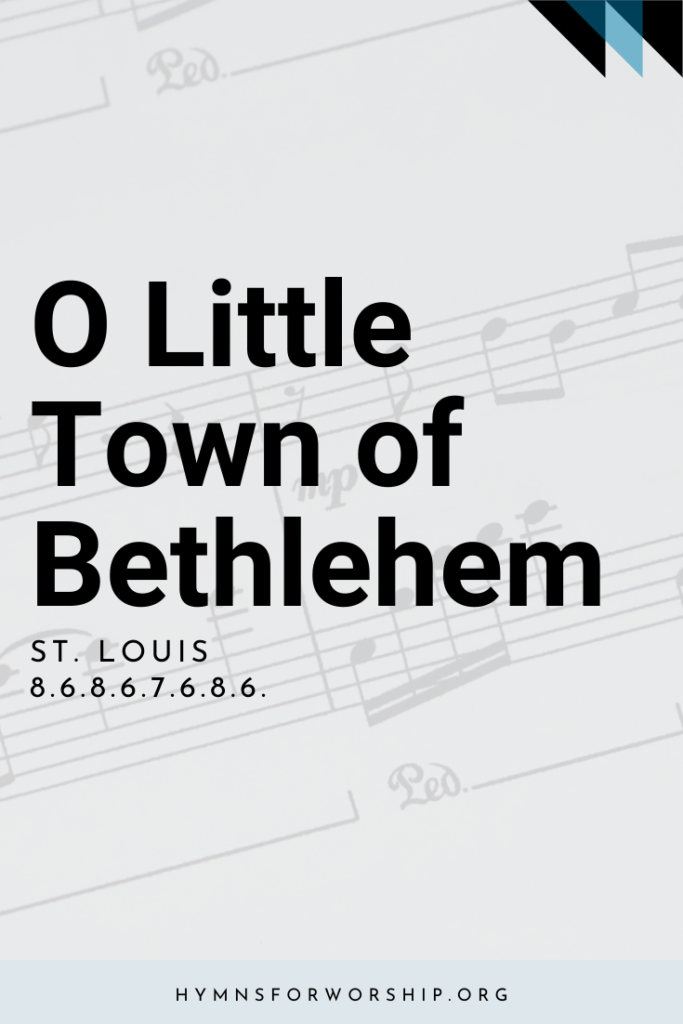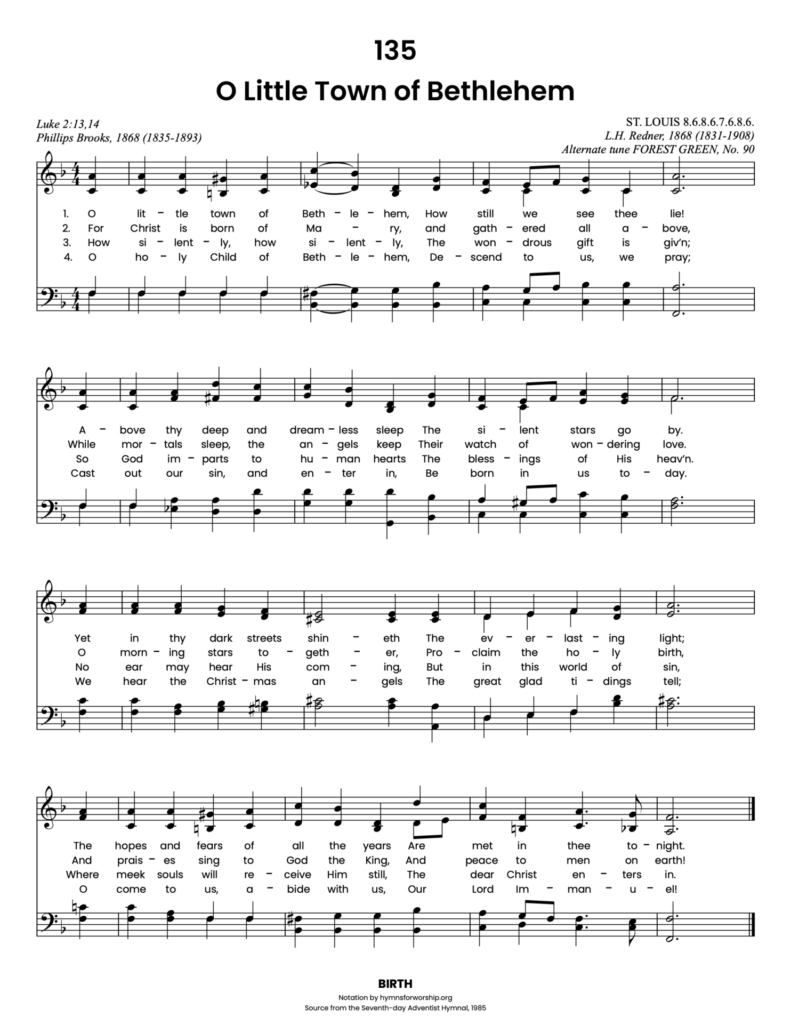JESUS CHRIST >> Birth
SDAH 135
O little town of Bethlehem, how still we see thee lie!
Above thy deep and dreamless sleep the silent stars go by.
Yet in thy dark streets shineth the everlasting Light;
The hopes and fears of all the years are met in thee tonight.


Get the hymn sheet in other keys here
For Worship Leaders
Make each hymn more meaningful with these helpful tools: Short, ready-to-use hymn introductions for church bulletins, multiple ways to introduce a hymn based on your worship theme and in-depth history and insights to enrich your song service.
Hymn Spotlight: O Little Town of Bethlehem
Inspired by a Christmas Eve service in Bethlehem in 1865, Phillips Brooks wrote this beloved carol to capture the quiet wonder of Christ’s birth. Set to music by his church organist, Lewis Redner, the hymn first rang through a Sunday school in Philadelphia in 1868.
As we sing of that “still” and “silent” night, we are reminded that Jesus—the Light of the world—entered our world gently, calling each of us to prepare Him room, not just at Christmas, but every day until He comes again.


Text
1
O little town of Bethlehem, how still we see thee lie!
Above thy deep and dreamless sleep the silent stars go by.
Yet in thy dark streets shineth the everlasting Light;
The hopes and fears of all the years are met in thee tonight.
2
For Christ is born of Mary, and gathered all above,
While mortals sleep, the angels keep their watch of wondering love.
O morning stars together, proclaim the holy birth,
And praises sing to God the King, and peace to men on earth!
3
How silently, how silently, the wondrous Gift is giv’n;
So God imparts to human hearts the blessings of His heav’n.
No ear may hear His coming, but in this world of sin,
Where meek souls will receive Him still, the dear Christ enters in.
4
O holy Child of Bethlehem, descend to us, we pray;
Cast out our sin, and enter in, be born in us today.
We hear the Christmas angels the great glad tidings tell;
O come to us, abide with us, our Lord Emmanuel!

Hymn Info
Biblical Reference
(a) Luke 2:4 (b) Luke 2:11, 13-14 (c) Ps 149:4 (d) Eph 3:17
Author
Phillips Brooks (1835-1893)
Year Published
1868
Hymn Tune
ST. LOUIS
Metrical Number
8.6.8.6.7.6.8.6.
Composer
L.H. Redner (1831-1908)
Year Composed
1868
Alternate Tune
FOREST GREEN, SDAH 90
Theme
BIRTH OF JESUS CHRIST





